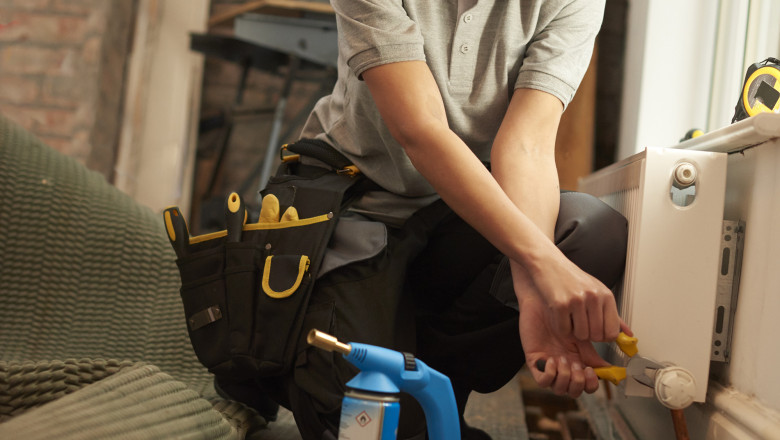views
What is Smart Home Integration?
Smart home integration involves connecting various devices and systems—such as lighting, heating, security, and entertainment—into a centralized platform that allows homeowners to control them remotely or automatically. This integration often uses a combination of Wi-Fi, Bluetooth, Zigbee, or Z-Wave protocols to enable devices to communicate with each other and with a central hub or app.
Step-by-Step Process of Smart Home Integration
1. Assessing Needs and Goals
Before diving into installation, the first step is assessing your lifestyle and goals. Are you looking to improve security, reduce energy bills, or enjoy the convenience of voice-controlled lighting and appliances? Defining your objectives helps guide the selection of compatible devices and systems.
For example, someone focused on energy efficiency may prioritize smart thermostats, lighting, and solar panel monitoring, while a tech-savvy homeowner may be interested in voice assistants and home automation routines.
2. Planning and Infrastructure Evaluation
Smart home systems rely heavily on a stable and secure Wi-Fi network. A thorough evaluation of the home's layout and existing infrastructure is essential to ensure signal coverage in every room. In many cases, upgrading the router or installing range extenders may be necessary.
Additionally, older homes might require updated wiring or new outlets to accommodate advanced smart devices. This is where a qualified professional, such as an Electrician in Tonbridge, can ensure that the home’s electrical system is safe and capable of supporting smart technologies.
3. Choosing a Central Control Hub
A central hub acts as the brain of the smart home, allowing all devices to connect and communicate. Popular options include Amazon Echo, Google Nest Hub, and Apple HomeKit. When choosing a hub, it's crucial to consider compatibility with the devices you plan to install.
The hub not only centralizes control but also enables automation features—such as turning off all lights and locking doors when you leave home.
4. Device Selection and Compatibility
With an array of smart devices available, from bulbs and thermostats to cameras and doorbells, it's important to select products that work together seamlessly. Most manufacturers now clearly list compatible platforms and hubs on their packaging or websites.
Popular categories include:
-
Smart Lighting – Controlled by voice, app, or sensors.
-
Smart Thermostats – Learn your habits to optimize heating/cooling.
-
Smart Security Systems – Cameras, door sensors, and alarms that alert you in real-time.
-
Smart Plugs and Switches – Turn ordinary appliances into smart ones.
A local expert such as an Electrician in Sevenoaks can help with installing and setting up wired smart systems, especially for lighting or integrated alarms.
5. Professional Installation vs. DIY
While many smart devices are designed for easy self-installation, more complex systems—like in-wall switches, home security networks, or smart HVAC systems—require professional expertise. Poor installation not only risks damaging expensive equipment but also poses safety concerns.
Engaging a certified electrician ensures compliance with local building codes and safe integration. For residents in Kent, consulting a trusted Electrician in Tunbridge Wells can provide peace of mind and ensure that your smart home setup is both efficient and secure.
6. Automation and Customization
Once devices are installed, the real magic of smart homes begins with automation. Routines can be programmed to suit your lifestyle:
-
Wake-up scenes with gradual lighting and morning news.
-
Motion-activated outdoor lights for security.
-
Thermostat adjustments based on occupancy sensors.
-
Voice commands to control multiple devices simultaneously.
These customizations not only enhance comfort but also improve energy efficiency.
7. Ongoing Maintenance and Updates
Like any tech ecosystem, smart home systems require regular maintenance. Software updates help fix bugs, enhance security, and introduce new features. It's also important to monitor device performance and replace outdated hardware as needed.
Most platforms provide easy access to firmware updates via their mobile apps. A reliable electrician or smart home consultant can also assist with troubleshooting or future expansions of your setup.
The Future of Smart Living
As technology continues to evolve, smart home integration is expected to become even more intuitive and intelligent. Artificial intelligence, voice recognition, and machine learning will further personalize how homes respond to our needs.
For homeowners, this means not just convenience but also tangible benefits—such as lower utility bills, enhanced safety, and an increased property value. Whether you're retrofitting a single room or planning a whole-home upgrade, smart home integration is an investment in both comfort and the future.
Conclusion
Smart home integration is a step-by-step process that begins with understanding your needs and ends with creating a responsive, efficient living space. While some components are suitable for DIY installation, involving professionals ensures a safe and seamless experience. Whether you're working with an Electrician in Tonbridge, an Electrician in Sevenoaks, or an Electrician in Tunbridge Wells, expert guidance can make all the difference in turning your smart home dreams into reality.






















Comments
0 comment